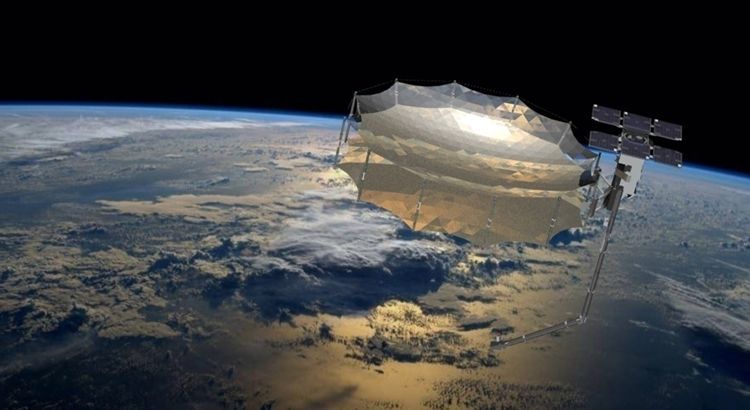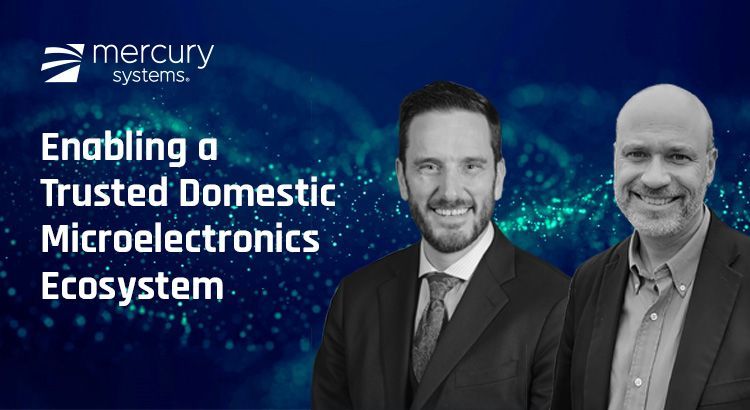
Delivering processing innovation for the air and space domains
Mercury Systems
September 13, 2024
Ahead of the 2024 AFA Air, Space & Cyber Conference, Mercury’s chief operating officer, Roger Wells, sat down for an interview with Air & Space Forces Magazine. In a wide-ranging conversation with editor-in-chief Tobias Naegele, Roger discusses the global security environment and how the Mercury Processing Platform is providing processing architectures that support critical U.S. air and space missions.
Learn More:
Discover the Mercury Processing Platform
Tobias Naegele: Welcome to Air and Space Forces Magazine. I'm Tobias Naegele, editor-in-Chief Edge computing. The devices embedded in all manner of modern weapon systems are the brains that make possible the speed and precision of modern warfare. Mercury Systems is a leading innovator in this crucial sector, leveraging the best commercial technologies to gain maximum advantage for us and allied war fighters. I'm joined now by Roger Wells, who became Mercury's Chief operating Officer earlier this year. Roger.
Roger Wells: Hi, Tobias. Yeah, thanks for having me.
Tobias Naegele: Thanks for being here. So let's start with just what is happening now in edge computing and what's driving what the pressing needs are and why that's important?
Roger Wells: Yeah, so we find ourselves in a really dynamic time. Technology is evolving extremely quickly, as is the threats and challenges that we find out on the battle space, especially as we look to combat peer and near peer adversaries in a contested environment. Being able to have integrated processing platforms and management systems at the edge in order to prosecute missions very quickly is going to be incredibly and increasingly important. But also as we think about extending our partnerships with our international allies, as we think about having more extendable and attributable platforms on the battlefield, it's going to be increasingly important to make sure that our systems are built with security in mind, antit, tamper and cyber resiliency, very quick processing timelines to make sure that we're countering the threats that we find, especially from advanced radar and missile systems, electronic warfare and other cyber capabilities. So having the processing capability at the edge that spans from signal acquisition and conversion to processing data management and distribution into display is going to be necessary on a contested battlefield. Really what we're doing with our embedded processing platform is working to ensure that we can very quickly, very rapidly transform the data that we collect from the environment into actionable decisions in a timeline and a time constant that increases survivability.
Tobias Naegele: So Roger, you talked about a spectrum of capabilities. What are those capabilities and how do they fit together and which parts of the ecosystem do they connect?
Roger Wells: Yeah, that's a great question. So the spectrum of capabilities that we've assembled cuts across a wide variety of elements of the processing chain. Everything from signal collection and conversion to processing data management and distribution displays all the way through fully integrated mission computing solutions. We've assembled those as individual that are modular and open in nature, but together they comprise the mercury processing platform. And that mercury processing platform is what gives us the capability of really prosecuting time critical mission critical operations at the edge. Now, the technologies that compose that run the gamut from small mimic based components to system and packaging and advanced processing boards at the edge and embedded computing heads up displays and other display architectures, data devices, and data recording. So it's a broad range of technology that we've put together and assembled as part of this processing capability. And they're
Tobias Naegele: All plug and play compatible?
Roger Wells: Yeah, they're all plug and play compatible. One of the most important things that is needed as we think about modernization and readiness is compliance with standards, whether they're security and information assurance, safety, open system standards like Mosa and sosa, but done in a way that we can not only provide modular capability based upon our customer's needs, things that are easily incorporated into their existing architectures, as well as wholesale processing solutions that are designed to solve really, really challenging problems in time critical ways. When I look at the breadth of deployment of Mercury technology, either as components or as part of the mercury processing platform, we're on over 300 defense programs in the US and across our international allies. Some examples are radiation tolerant, solid state data recorders on SDAs, new missile tracking satellites. We've got electronic and processing modules on the next generation of strategic weapons programs. We've got signal conversion and processing capabilities as part of Blue Halo solution to modernize the satellite ground control network. And then we've got RF technologies helping to process radar and EW data on fourth and fifth generation fighter aircraft as well as ISR platforms like the F 35, F 16, and Global Hawk. So we have a broad variety of technologies that are modular and independent, but also to be able to be integrated into a processing architecture that is mission ready and easily integrated into our customer's architectures.
Tobias Naegele: And a huge range of applications.
Roger Wells: Huge range of applications. Obviously, we were very involved in the aviation and space-based markets, but Mercury technology finds its way across all domains and all missions to include certainly the airborne and space, but maritime, underseas, land-based processing architectures and missions that span EW radar, missile and weapon systems, a whole gamut of C3 I capabilities as well. We're really providing the processing architecture that supports the time critical processing of information at the edge, again, in order to rapidly transform data into actionable intelligence.
Tobias Naegele: So as you've acquired all of these companies, how do you maintain the Mercury secret sauce? I mean, the company is 40 years old, but the various pieces aren't all the same age, and they weren't all one company. How have you done that? Yeah,
Roger Wells: So through several different ways. First, we've executed a series of restructuring within Mercury to bring those acquisitions closer. It was very much a decentralized model where we had really site-based operations and activities. Through this restructuring, we've brought everybody together in a very integrated and centralized way in order to enhance our ability to respond to the needs of our customers, but leverage the true power of our technology and our mission oriented thinking across the market. This also allows us to more effectively deploy resources to the most pressing and critical needs that our customers have, especially given some of the demanding and challenging schedules that are needed. But what we do as a company is really make sure that we have very well aligned, integrated, strategic product development roadmaps and technology development roadmaps that guide how we go about creating the capabilities that we do and ensuring that they're integrated across the mercury processing platform. And that processing platform really gives us the opportunity to bring all of the breadth and capability from all the acquisitions, all the organic development that we've done in order to solve those really complex, challenging operational problems that can only be done at the edge.
Tobias Naegele: So you talked about the reorganization and business reorganizations are fascinating to business people, and you're an engineer by training, probably not necessarily the most exciting thing for engineers or even necessarily obviously, clear to a program manager at the level you were early in your career. Why are those changes that you talked about important to them, how does that make you more effective for your customer?
Roger Wells: Yeah, so it comes down to predictable performance, right? Being able to deliver consistently at a high degree of quality at the ramp rate and scale that our customers need to feel the capabilities in a timely way into the platforms that they need. So the activities that we're doing from a corporate restructuring perspective are intended to do that. They're intended to improve our ability to meet our obligations and to deliver against the commitments that we've made, really working to increase customer satisfaction and enhance the expectations that we are working with our customers. But at the end of the day, it's all about getting mission capability out to the field as quickly as possible in order to give our forces the tactical advantage on the battle space. So as we think about how we're restructuring the company, as we think about how we're organizing and building a business model, we want it to be customer facing. We want it to represent how we interact and evolve with our customers to ensure that we've got technology that's aligned with their roadmaps and aligned with the programmatic development schedules that are being worked, but again, in a way that really works to create innovative technology that's mission ready and capable of being fielded in both current as well as next generation platforms.
Tobias Naegele: Okay. Roger Wells Mercury Systems, thanks so much for being with us.
Roger Wells: Thanks, Tobias. It's been a pleasure.






 Digital transformation with MBSE is the key to rapid innovation
Digital transformation with MBSE is the key to rapid innovation Enabling a Trusted Domestic Microelectronics Ecosystem
Enabling a Trusted Domestic Microelectronics Ecosystem